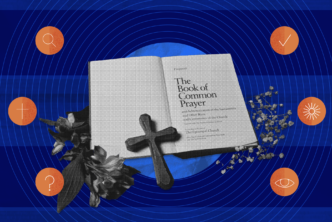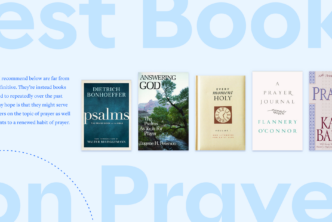According to Lifeway Research, “64% of churches either have nothing to assimilate new members, or no systemic plan to move people towards membership.”1 Imagine if that were true in the workplace . . . not a good start. Like onboarding and mentorship at work, a church membership class helps people dig in and move forward with confidence.
Chuck Lawless, author of Membership Matters: Insights from Effective Churches on New Member Classes and Assimilation, reports that he’s never heard a church leader say they shouldn’t have had a class—but many leaders have told him they wish they’d had one sooner.2
Here’s how to get yours started.
1. Define your why.
Sit down with your church leaders and discuss what a successful new members class means to you.
Chances are, your vision includes helping people feel welcome, healthy church growth, unity in the church, getting new members excited about joining and serving, and helping pastors get to know the flock they’re called to pastor (1 Pet. 5:2).
After the discussion, write your reasons down so you can easily refer to them throughout your planning process. Taking this first step will help keep you from making decisions that won’t serve you well.
Here’s an example of a decision like that—a 13-hour new members curriculum required before membership.
(I didn’t go through it, thankfully; a friend told me about it.)
Those who completed the class were assimilated, sure, but only a minority finished due to the enormous time investment. Because the church was so focused on getting people assimilated, they, in essence, turned away people who could have been excellent members.
2. Choose your what.
Determine the content of your membership class.
It should reflect your church, tell the story of how it came to be, cast vision for where you’re going, and include next steps so people know what to expect and how to get involved.
Church Answers recommends these membership learning objectives3:
- Why join a church?
- Reaching your community
- Unity of church members
- The importance of worship
- Personal giving
- Serving others
- How to make disciples
- Taking your next step
Here’s another possible outline:
- Ice breaker
- Leader introduction
- Brief church history
- Mission and vision
- What your church believes
- Expectations (for leaders and members)
- Requirements for membership
- How to get involved
- Q&A
As you develop your new membership content, keep length in mind. What’s pivotal for new members and potential new members to know? What can you include in a membership booklet that people can look through later? (Things like a church timeline, full statement of faith, list of ministries and their leaders, etc.)
These example resources may give you more ideas as you begin to develop your curriculum:
- Class handout
- New members handbook
- New members orientation online handbook
3. (Carefully) answer when and how often.
Think through what everyday life looks like for your members, and try to track down what days and times have generally worked best for your church and small group events.
Meeting during kids’ nap times, for instance, is likely not the best plan.
Here are a few options:
- Host your class before church starts, with breakfast provided.
- Host your class after church ends, with lunch provided.
- Host your class in two parts—the first at a Friday dinner, and the second over a Saturday morning online video call. (Tip: Faithlife has free online video chatting.)
- If your church has two services, host your new members class during a service.
- Ask your new members and potential new members which days and times would work best. Obviously you can’t accommodate every suggestion, but you may find a common denominator among responses.
Try to keep it to two or three hours total if you’re doing one session or around four hours if you’re breaking it up into several sessions.
Once you’ve determined days and times, decide how frequently you’ll offer the class (e.g., twice a year, once per quarter, etc.).
4. Flesh out the how.
Classes like these take time and effort to pull off, so thoughtful planning now sidesteps a lot of scrambling later.
As you think through completing a successful class, consider these elements:
- Facilities scheduling
- Facilities setup and teardown
- Digital resources
- Printed resources
- Videos
- To announce your class
- To use during your class
- Volunteer/staff involvement
- Childcare worker needs
- Catering/food planning
You already accounted for how long the class will be and when it will meet in the previous step. Now schedule things out—when people will need to arrive to set up and greet attendees, how long each session will be, how long your breaks between sessions will be, etc.
Also decide whether the pastor will teach the entire class or whether you’ll be splitting teaching responsibilities between pastors and staff.
(Regardless of who’s teaching, you’ll want the pastor to be there—Lawless says, “Class attendees have told us repeatedly, ‘We appreciated the time with our pastor.’ In many cases, a membership class provides attenders the most intimate time they will have with their pastor. After that time, they will hear him differently in the pulpit.”4)
5. Spread the word.
At least four weeks in advance of your class’s beginning, start announcements in multiple places:
- service announcement slides
- digital signage
- bulletins
- newsletters
- your website
- your online community
- emails
- text messages
Also add it to your church event calendar.
Finally, enlist help. Ask your Bible study/small group leaders to invite new folks to the class. A personal invitation goes a long way.
During your announcements, say it loud and clear that attending the class doesn’t mean you have to become a member—anyone new is welcome to come, meet others who are new, and find out more about the church.
6. Prep for success.
With the steps above, you’ve created a delectable main course. Now it’s time to add superb side dishes and plate it all like a Michelin-star chef.
- CHILDCARE.
- Food! (This one’s worth reiterating.) Provide breakfast, snacks, dinner—whatever’s tasty for that time of day.
- Give people a gift that helps them understand your church. (For example, one church I know of gave away the book What Is a Healthy Church Member? to each person or family that attended. )
- Encourage table talk among attendees.
- Remember it’s okay to blend in-person and online meetings.
- Run a “beta” group and adjust your class based on feedback. (Ask about curriculum, methods, what people liked best, and what could be improved.)
- Try to leave these elements off the plate.
- Lack of clarity. Don’t accidentally leave people in the dark about what happens before and after the membership class. Give them a roadmap for how to become a member and which step comes next.
- Unnecessary length. Since people’s attention spans are only so long, trim anything that doesn’t absolutely need to be in your class.
- Difficulty. Don’t make people feel like they have to jump through blazing hoops to become members—e.g., complete a multisession membership class and watch these videos at home and study the 40-page handout and read this book and be ready to discuss it, and . . .
- Public prayer requests. People in your new members class don’t know each other or your leaders yet, and it can be really uncomfortable to share burdens with strangers.
7. Follow up.
This important step is often forgotten, but just like with church visitors, people who come to your membership class shouldn’t fall through the cracks. They may want to keep coming to your church even if they weren’t ready to join.
Plus, following up helps people feel noticed and cared for, and it doesn’t take tremendous effort.
- Have a pastor or staff member reach out to say hello and ask if that person needs prayer.
- Send an email or text to invite them to other church events or small groups.
- Drop a handwritten card or postcard in the mail.
***
Now that you know how to start a church membership class, you can get it going. Your new members will thank you!
If you don’t yet have a simple way to keep track of and communicate with visitors and new members, take a look at Servant Keeper church management software from Faithlife. It’s customizable, affordable, and easy to use.
- https://lifewayresearch.com/2014/01/22/the-benefits-of-a-church-membership-class/, accessed October 13, 2021.
- https://churchanswers.com/blog/10-findings-about-church-membership-classes/, accessed October 27, 2021.
-
https://churchanswers.com/solutions/courses/the-complete-membership-kit/, accessed October 13, 2021
- https://churchanswers.com/blog/10-findings-about-church-membership-classes/, accessed October 14 2021.





